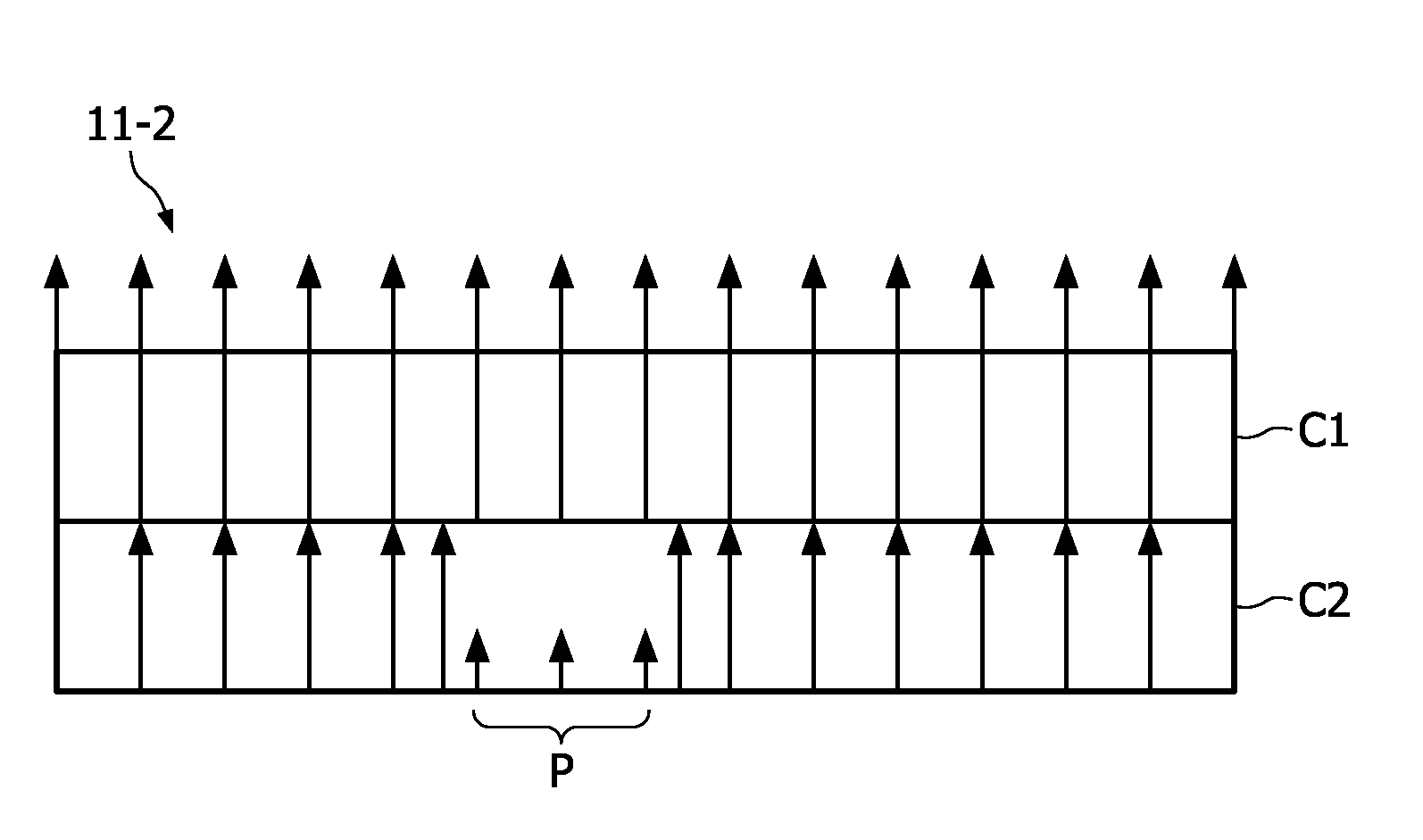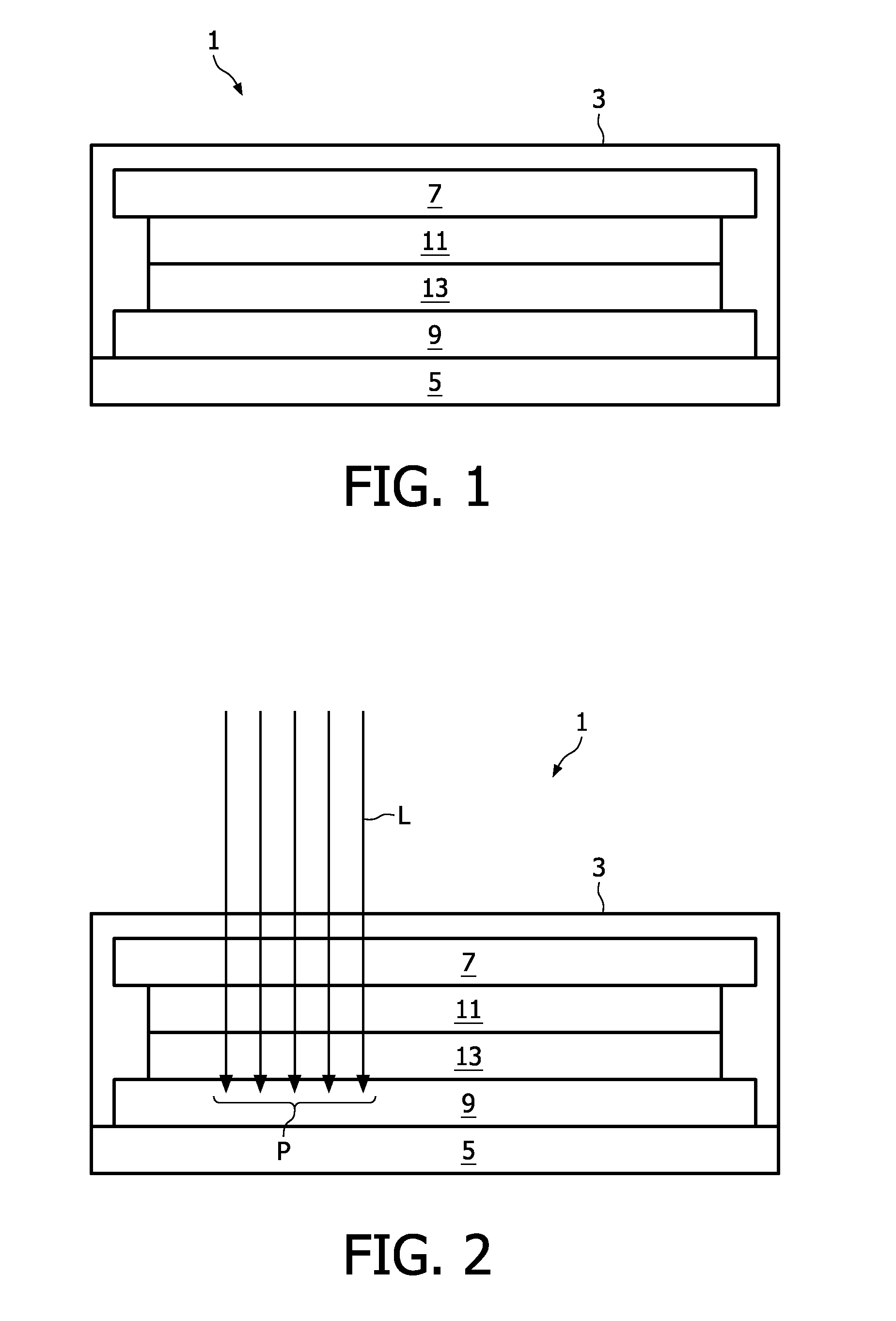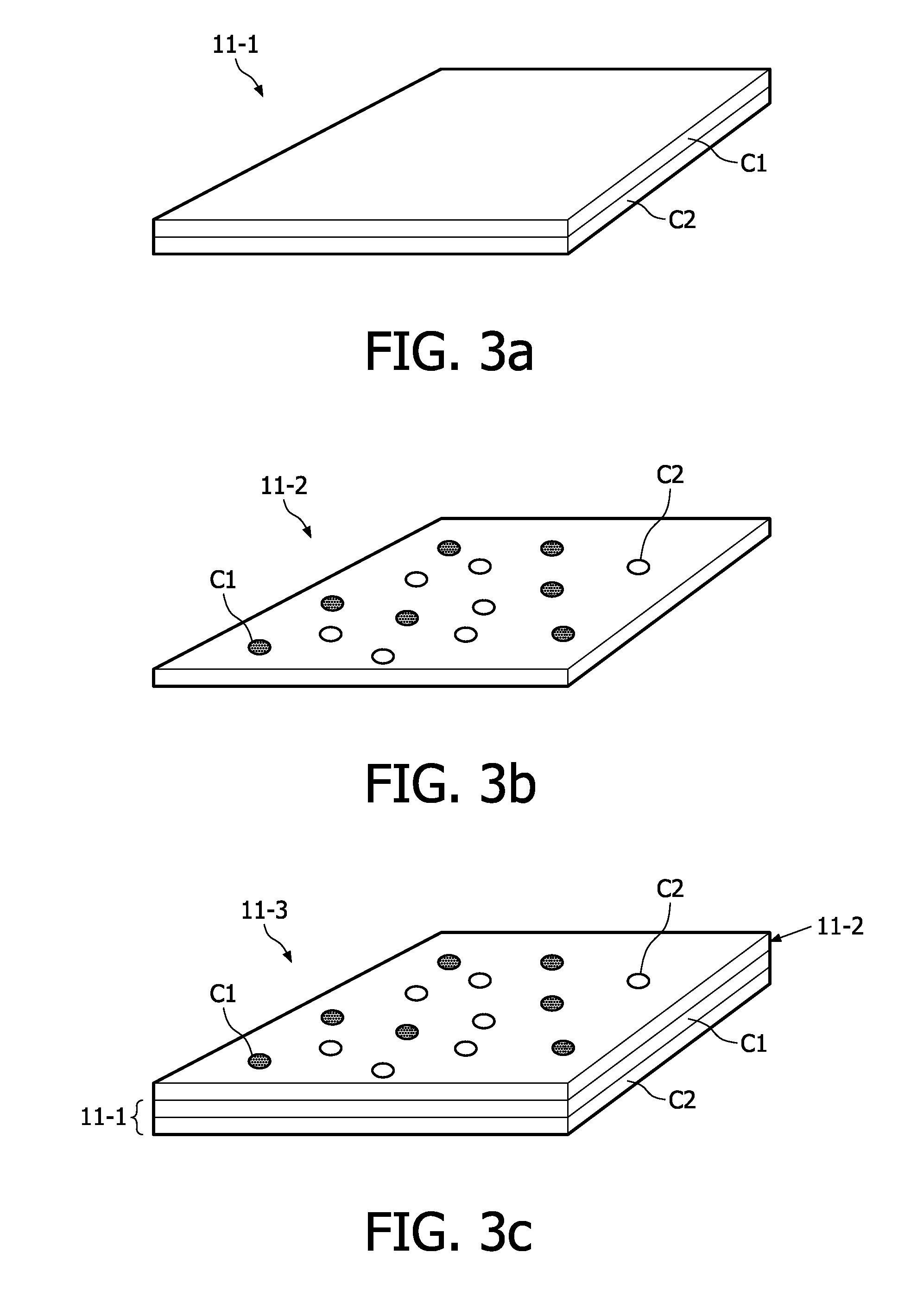Device and Method for Lighting
- Summary
- Abstract
- Description
- Claims
- Application Information
AI Technical Summary
Benefits of technology
Problems solved by technology
Method used
Image
Examples
Embodiment Construction
[0039]FIG. 1 shows a cross-sectional view of an embodiment of an OLED device 1 according to the inventive concept. The OLED device 1 comprises an encapsulating body 3, made of e.g. glass, metal or other hermetic coatings for the protection of internal components 7,9,11,13 from contamination, e.g. moisture or dirt. The encapsulating body 3 might also contain getters to absorb water which might have penetrated the encapsulation. Inside the encapsulating body 3, the OLED device comprises a cathode 7, an anode 9 and a light emitting layer comprising an emissive layer 11 and an electrically conductive layer 13. These internal components may be placed on a substrate 5 made of e.g. glass, by e.g. placing the anode 9, the conductive layer 13, the emissive layer 11, and the cathode 7 on the substrate 5 in the mentioned order. The emissive and conductive layers 11 and 13, respectively, may be produced from an organic material such as a polymer or oligomer. The emissive layer 11 can comprise d...
PUM
 Login to View More
Login to View More Abstract
Description
Claims
Application Information
 Login to View More
Login to View More - R&D
- Intellectual Property
- Life Sciences
- Materials
- Tech Scout
- Unparalleled Data Quality
- Higher Quality Content
- 60% Fewer Hallucinations
Browse by: Latest US Patents, China's latest patents, Technical Efficacy Thesaurus, Application Domain, Technology Topic, Popular Technical Reports.
© 2025 PatSnap. All rights reserved.Legal|Privacy policy|Modern Slavery Act Transparency Statement|Sitemap|About US| Contact US: help@patsnap.com



